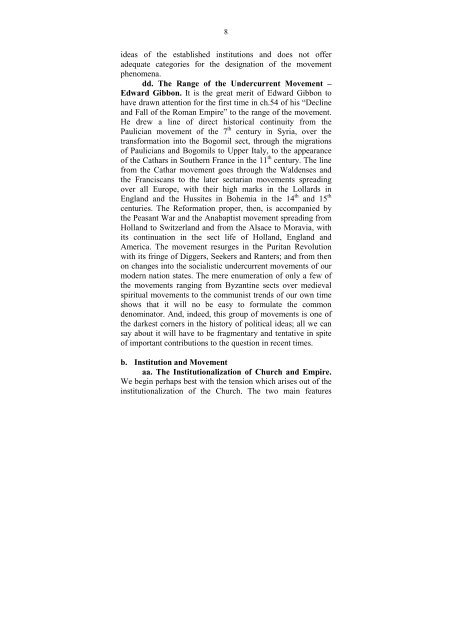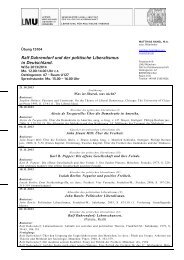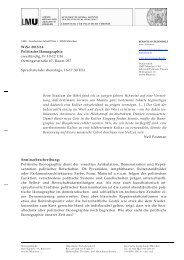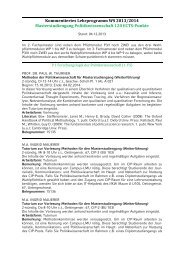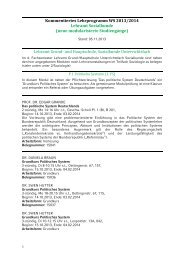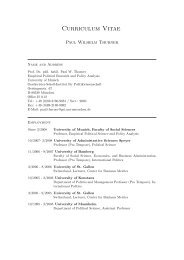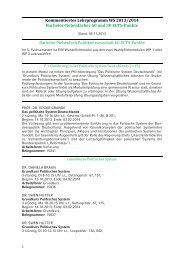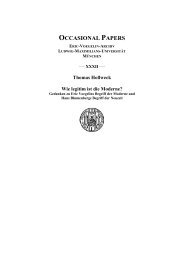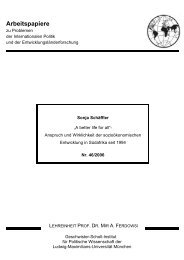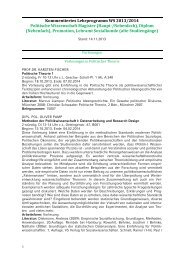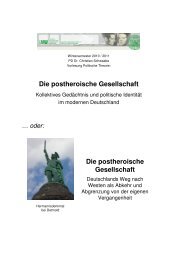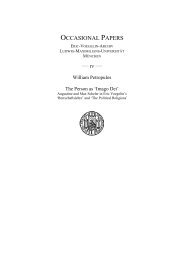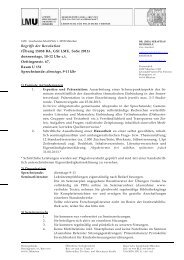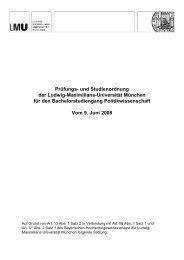Eric Voegelin The People of God - Geschwister-Scholl-Institut für ...
Eric Voegelin The People of God - Geschwister-Scholl-Institut für ...
Eric Voegelin The People of God - Geschwister-Scholl-Institut für ...
You also want an ePaper? Increase the reach of your titles
YUMPU automatically turns print PDFs into web optimized ePapers that Google loves.
8<br />
ideas <strong>of</strong> the established institutions and does not <strong>of</strong>fer<br />
adequate categories for the designation <strong>of</strong> the movement<br />
phenomena.<br />
dd. <strong>The</strong> Range <strong>of</strong> the Undercurrent Movement –<br />
Edward Gibbon. It is the great merit <strong>of</strong> Edward Gibbon to<br />
have drawn attention for the first time in ch.54 <strong>of</strong> his “Decline<br />
and Fall <strong>of</strong> the Roman Empire” to the range <strong>of</strong> the movement.<br />
He drew a line <strong>of</strong> direct historical continuity from the<br />
Paulician movement <strong>of</strong> the 7 th century in Syria, over the<br />
transformation into the Bogomil sect, through the migrations<br />
<strong>of</strong> Paulicians and Bogomils to Upper Italy, to the appearance<br />
<strong>of</strong> the Cathars in Southern France in the 11 th century. <strong>The</strong> line<br />
from the Cathar movement goes through the Waldenses and<br />
the Franciscans to the later sectarian movements spreading<br />
over all Europe, with their high marks in the Lollards in<br />
England and the Hussites in Bohemia in the 14 th and 15 th<br />
centuries. <strong>The</strong> Reformation proper, then, is accompanied by<br />
the Peasant War and the Anabaptist movement spreading from<br />
Holland to Switzerland and from the Alsace to Moravia, with<br />
its continuation in the sect life <strong>of</strong> Holland, England and<br />
America. <strong>The</strong> movement resurges in the Puritan Revolution<br />
with its fringe <strong>of</strong> Diggers, Seekers and Ranters; and from then<br />
on changes into the socialistic undercurrent movements <strong>of</strong> our<br />
modern nation states. <strong>The</strong> mere enumeration <strong>of</strong> only a few <strong>of</strong><br />
the movements ranging from Byzantine sects over medieval<br />
spiritual movements to the communist trends <strong>of</strong> our own time<br />
shows that it will no be easy to formulate the common<br />
denominator. And, indeed, this group <strong>of</strong> movements is one <strong>of</strong><br />
the darkest corners in the history <strong>of</strong> political ideas; all we can<br />
say about it will have to be fragmentary and tentative in spite<br />
<strong>of</strong> important contributions to the question in recent times.<br />
b. <strong>Institut</strong>ion and Movement<br />
aa. <strong>The</strong> <strong>Institut</strong>ionalization <strong>of</strong> Church and Empire.<br />
We begin perhaps best with the tension which arises out <strong>of</strong> the<br />
institutionalization <strong>of</strong> the Church. <strong>The</strong> two main features


